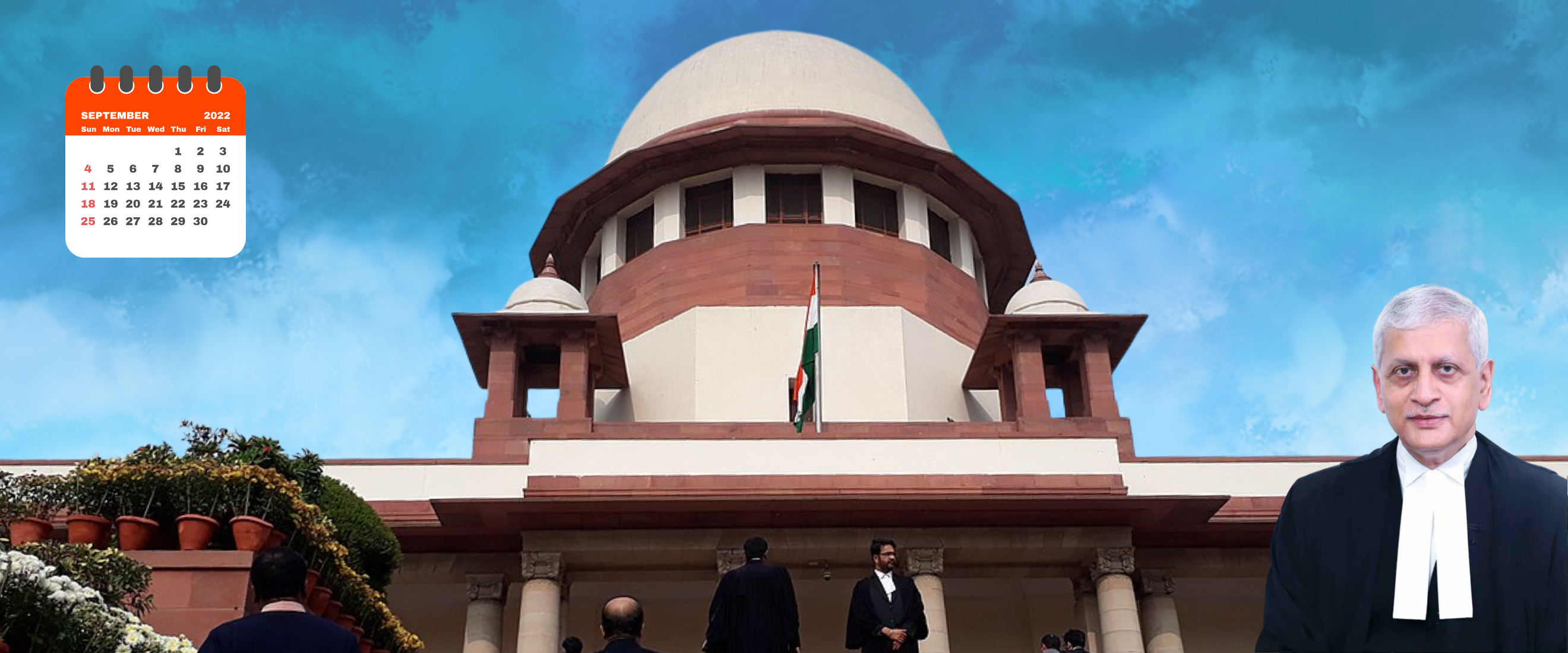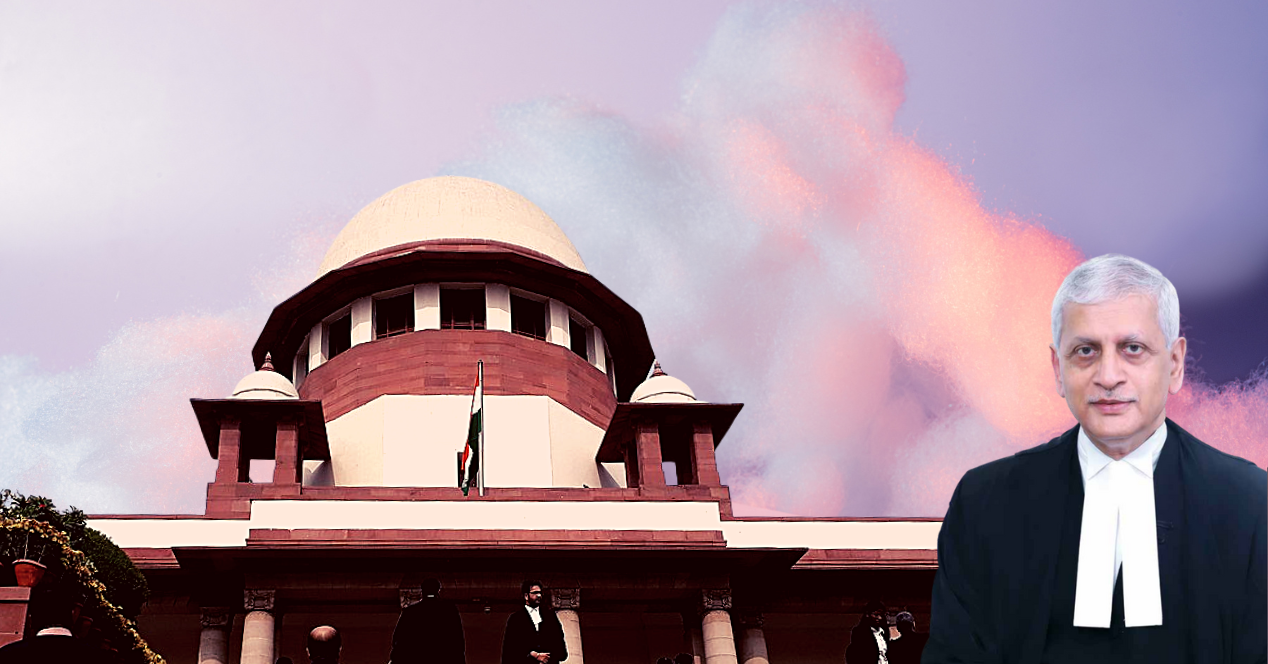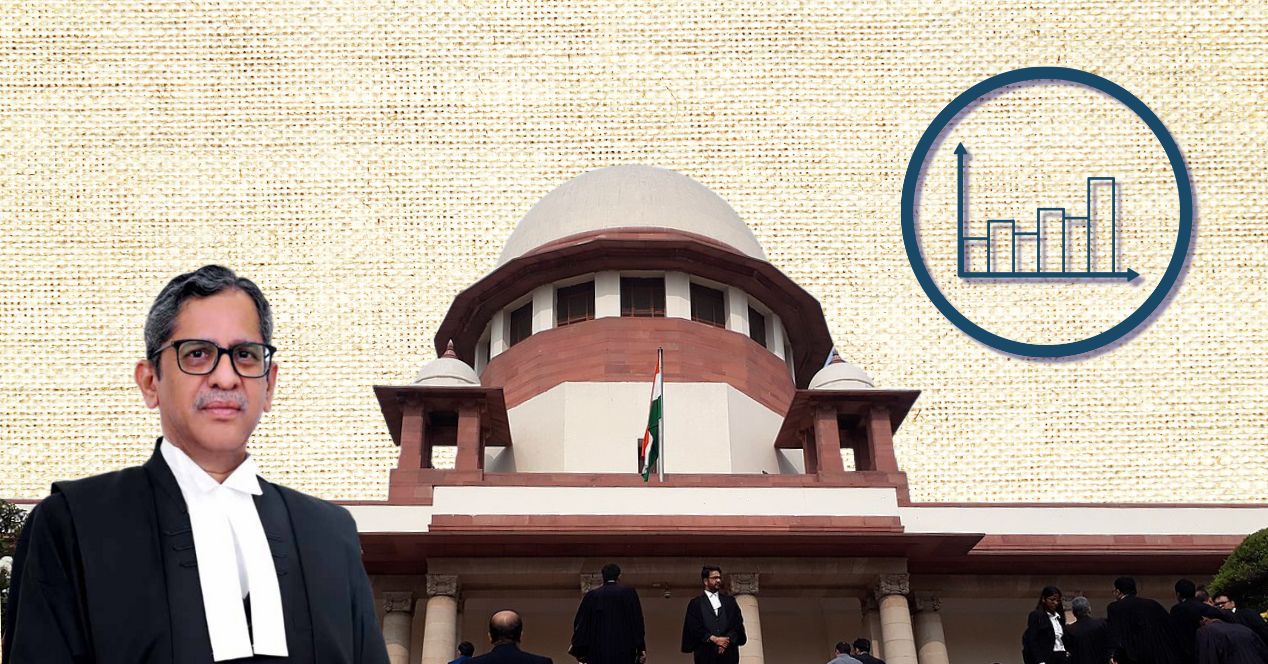Analysis
September Review: Sweeping Administrative Changes at the Supreme Court
While overall pendency figures remain unchanged, the Court’s focus appears to have shifted to disposing of older matters more efficiently.

CJI Lalit made several landmark announcements in September to ensure a more efficient Supreme Court. These include a change in the listing system for cases, prioritisation of older admitted cases, and the formation of Constitution Benches.
New Listing System for Cases
The newly appointed Chief Justice introduced a new listing system for hearing cases at the Supreme Court aimed at increasing focus on ‘admitted’ cases. Before the Court hears arguments on a case, it assesses whether it is worthwhile to hear the case in the first place. This assessment is done at the admission stage. Once the Court admits a case, it can move on to hearing arguments on merits at the ‘regular’ hearing stage.
Under previous Chief Justices, the Court only heard matters at the admission stage on Mondays and Fridays. These matters tended to spill over to the other days of the week causing delays for matters that were already admitted by the Court. Under CJI Lalit, Tuesday, Wednesday and Thursday mornings are now reserved for hearing final arguments, and admission matters are heard only in the second half of the day. This stark change attempts to combat the Court’s overwhelming miscellaneous caseload while addressing pending matters that have already been admitted.
Tackling the Registry’s Long-Pending Caseload
On September 15th, 2022, the Supreme Court Registry announced that it would drop 13,147 cases from the Court’s docket. The reason? These cases, which had ‘defects’, were ignored by the parties who had filed them for over eight years while the Court patiently waited for the defects to be rectified to no avail.
Despite this move, the Court’s monthly statistics showed no overall change in the pendency of cases—pendency dropped from 70,310 cases at the end of August to 69,461 cases at the end of September.
What then explains the lack of change in overall pendency? Two explanations emerge. The first—the 13,147 cases dropped by the Registry in September are part of the Registry’s docket, and not part of the Court’s actual caseload. Second, the Court is now focusing on older pending matters as against fresh cases at the admission stage.
The Registry’s function is to ensure that all cases are free from procedural defects, such as font size, translations in vernacular languages, etc, so that they are ‘fit’ to be heard by Judges. Once the case is deemed free from defects, the Registry approves it for hearing by the Court. The cases dropped by the Registry could therefore be matters that were pending before the Registry without sufficient measures to ensure that they are fit to be heard by the Supreme Court.
Focus on Older Pending Matters
On September 26th, 2022, the Registry announced that 300 older ‘after notice’ cases would be listed for hearing before different Benches starting from October 11th, 2022. After notice cases are among the class of cases yet to be admitted by the Supreme Court. The implication? The Court is now focusing on clearing long pending cases rather than prioritising fresh admission hearings over all other cases. Further, it is likely that these older matters have now become infructuous and may therefore be disposed of quickly.
The Supreme Court’s focus appears to have shifted from hearing older admitted matters as against primarily focusing on cases at the admission stage. Once the Registry has determined that a case has no procedural defects, a Bench of Judges will determine if the case is worth hearing. An earlier analysis by SCO discovered that only 11% of the cases filed at the Court make it past the admission stage.
The changes in the Court’s pendency, if any, will therefore not be reflected in its overall numbers, but rather in the type of cases that make up its pendency docket. If this hypothesis holds true, then the pending cases can now be expected to comprise fewer older cases as against a system where cases are left pending for a long time.
Revival of Constitution Benches
On August 24th, 2022, the Supreme Court announced the listing of 25 Constitution Bench cases to be heard starting from August 29th. The weeks that followed witnessed the formation of six 5-Judge Constitution Benches. These cases are of special importance for two primary reasons. First, they have widespread implications on various cases pending before subordinate Courts in the country as well as similar matters tagged with them. Second, the move returns the Court to its original identity as an interpreter of the Constitution rather than just a Court of appeals.
The Court has already disposed of one Constitution Bench matter and has reserved judgment in three others. More Constitution Bench cases are expected to follow suit, all of which will have far-reaching implications in the disposal of cases across the country.
While the numbers at face value may not indicate a change in the pendency of cases before the Supreme Court, the groundwork for improving Court efficiency has certainly been laid down. If the present trend in the Supreme Court’s functioning continues, one can finally expect positive changes in tackling the behemoth pendency of cases that the Court has long suffered under.




